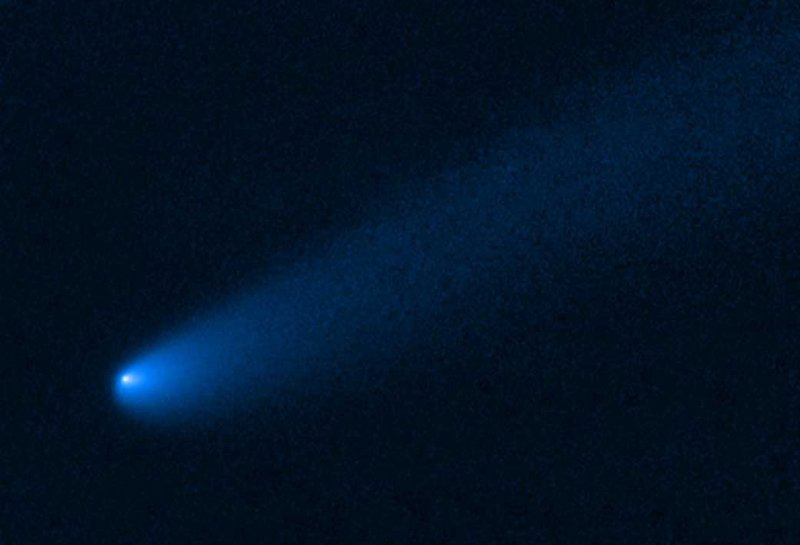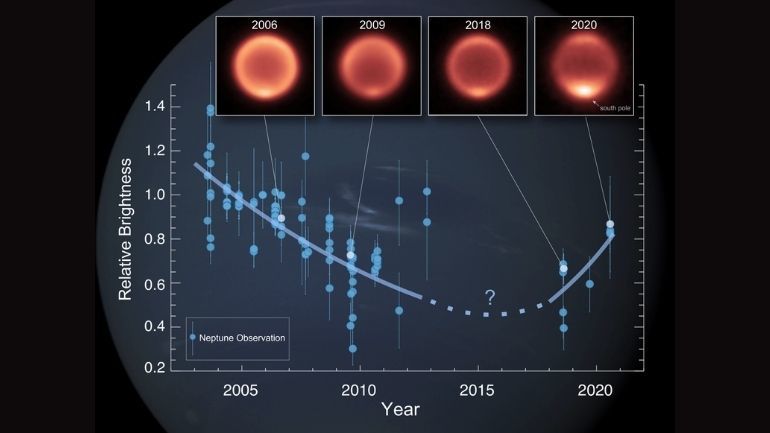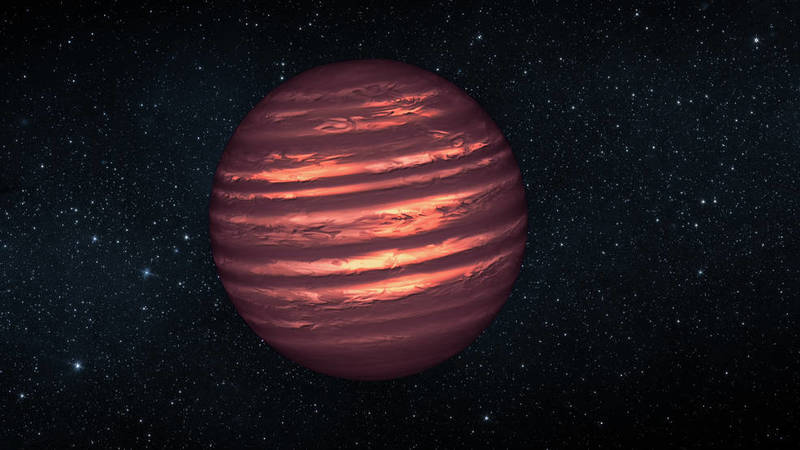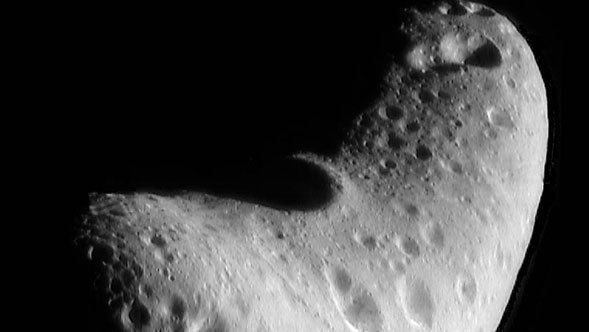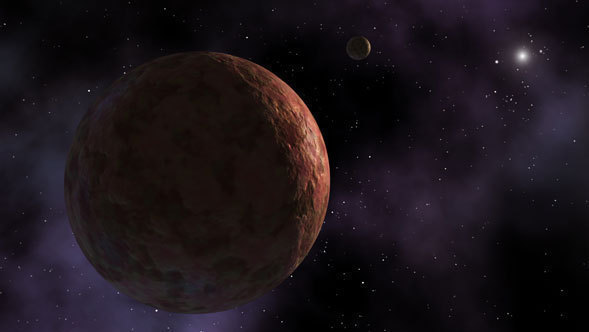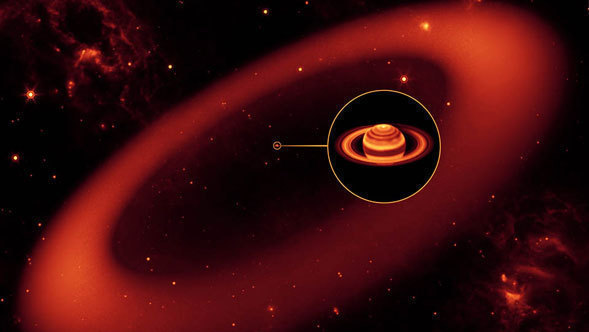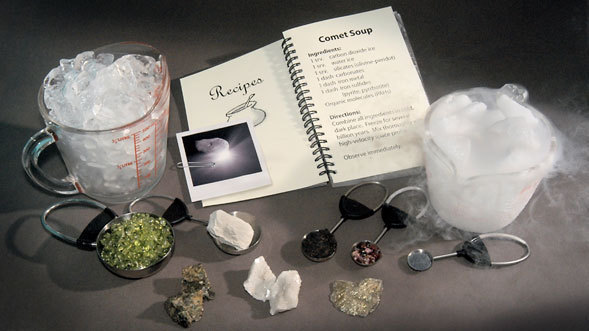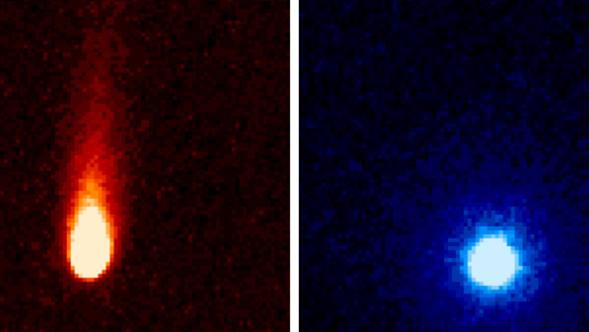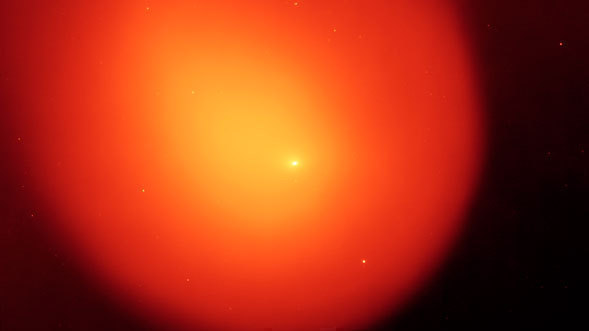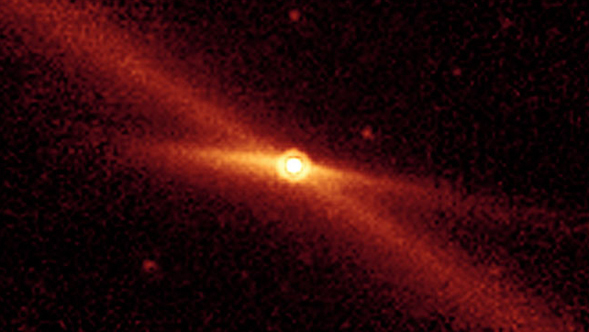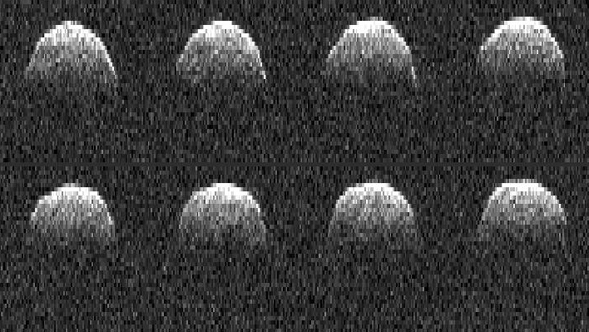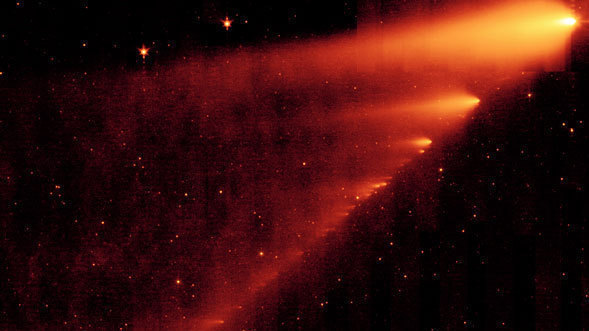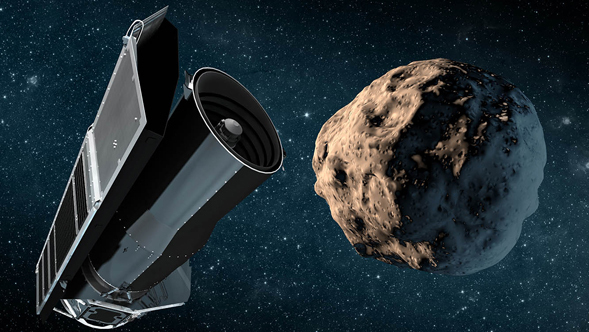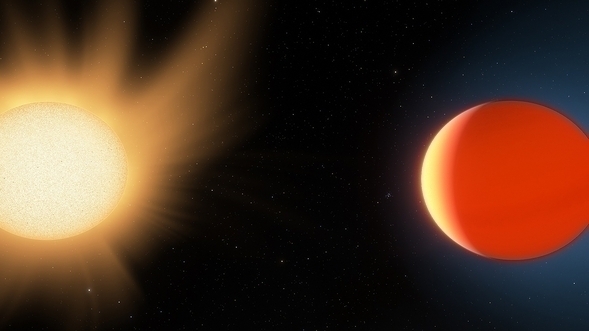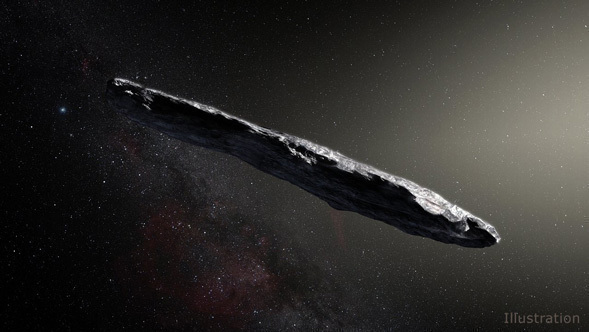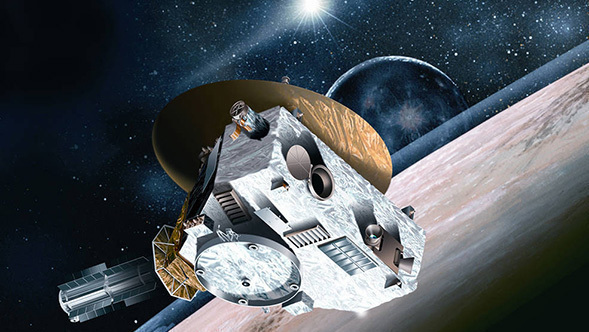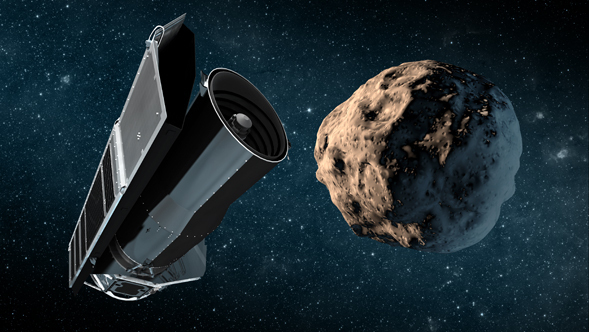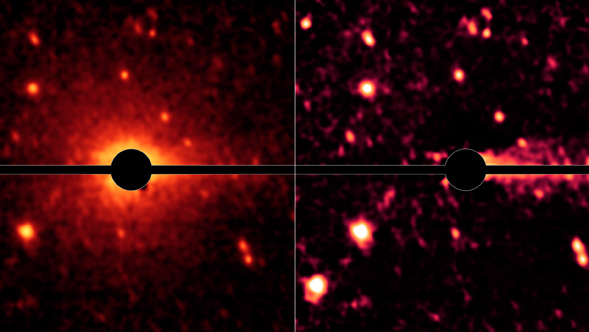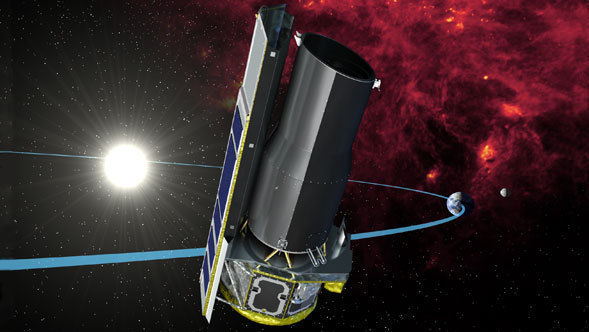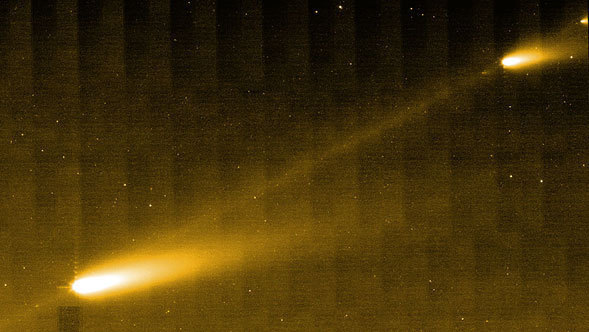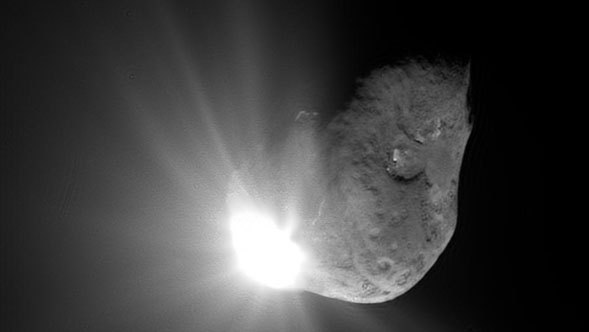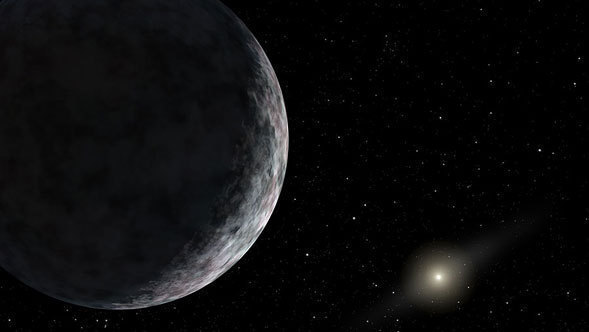Circling the sun in its Earth-trailing orbit, Spitzer provided a remote platform for studying our own Solar System. Its sensitive infrared detectors were well-suited to identify and characterize asteroids, image the dusty debris surrounding comets, and even discover Saturn’s largest ring.
For the first time, a wayward comet-like object has been spotted near the family of ancient asteroids.
New research led by space scientists at the University of Leicester has revealed how temperatures in Neptune’s atmosphere have unexpectedly fluctuated over the past two decades.
Is our solar system located in a typical Milky Way neighborhood? Scientists have gotten closer to answering this question, thanks to the NASA-funded Backyard Worlds: Planet 9 project, a “citizen science” collaboration between professional scientists and members of the public.
New research from NASA's Spitzer Space Telescope reveals that asteroids somewhat near Earth, termed near-Earth objects, are a mixed bunch, with a surprisingly wide array of compositions.
NASA-funded researchers have discovered the most distant object orbiting Earth's Sun. The object is a mysterious planet-like body three times farther from Earth than Pluto.
NASA's Spitzer Space Telescope has discovered an enormous ring around Saturn — by far the largest of the giant planet's many rings.
When Deep Impact smashed into comet Tempel 1 on July 4, 2005, it released the ingredients of our solar system's primordial "soup." Now, astronomers using data from NASA's Spitzer Space Telescope and Deep Impact have analyzed that soup and begun to come up with a recipe for what makes planets, comets and other bodies in our solar system.
Astronomers using NASA's Spitzer Space Telescope have observed what most likely are strong carbon dioxide emissions from Comet ISON ahead of its anticipated pass through the inner solar system later this year.
When comet Holmes unexpectedly erupted in 2007, professional and amateur astronomers around the world turned their telescopes toward the spectacular event. Their quest was to find out why the comet had suddenly exploded.
When our solar system was young, its biggest babies ”Jupiter and Saturn” threw tantrums by the trillion. The huge planets hurled ice-covered rocky bodies from the inner solar system far past the orbit of Pluto.
A scientist at NASA's Jet Propulsion Laboratory in Pasadena, Calif., has accurately determined the mass of a nearby asteroid from millions of miles away, the celestial equivalent of "guess your weight".
NASA's Spitzer Space Telescope has snapped a picture of the bits and pieces making up Comet 73P/Schwassman-Wachmann 3, which is continuing to break apart on its periodic journey around the sun. The new infrared view shows several chunks of the comet riding along its own dusty trail of crumbs.
Astronomers using NASA's Spitzer Space Telescope have measured the size of an asteroid candidate for NASA's Asteroid Redirect Mission (ARM), a proposed spacecraft concept to capture either a small asteroid, or a boulder from an asteroid. The near-Earth asteroid, called 2011 MD, was found to be roughly 20 feet (6 meters) in size, and its structure appears to contain a lot of empty space, perhaps resembling a pile of rubble. Spitzer's infrared vision was key to sizing up the asteroid.
The papers provide an inventory of some of the greatest discoveries of the past decade and suggest targets for the next generation telescope, scheduled to launch in 2021.
Could all of the asteroids, comets, and planets in our Milky Way galaxy be made of a similar mix of dusty components?
An international team of scientists recently measured the spectrum of the atmosphere of a rare hot Neptune exoplanet, whose discovery by NASA's Transiting Exoplanet Survey Satellite (TESS) was announced just last month.
In November 2017, scientists pointed NASA's Spitzer Space Telescope toward the object known as 'Oumuamua - the first known interstellar object to visit our solar system. The infrared Spitzer was one of many telescopes pointed at 'Oumuamua in the weeks after its discovery that October.
NASA's New Horizons will have the support of other spacecraft during its historic Pluto flyby, with observations from their outposts across the solar system.
Our Solar System is swarming with asteroids and comets. Although astronomers have identified many thousands of these space rocks, new candidates turn up all the time; some small fraction of which might even pose a threat of colliding with Earth.
NASA's Spitzer Space Telescope has uncovered secrets of the "asteroid" called Don Quixote, revealing its true comet nature.
New observations of a dust cloud trailing Earth may help astronomers find Earth-like planets around distant stars. NASA's Spitzer Space Telescope mapped the structure of this dust and measured how it interacts with our own planet.
Comet 73P/Schwassman-Wachmann 3 cannot seem to hold itself together. During a visit to the inner solar system in 1995, the icy dirtball began to fall apart.
Before it was discovered that gravity pulled comets across the sky, many peoples and cultures perceived these cosmic objects as bad omens or "big bullies." They were often blamed for plagues and wars on Earth. In movies this image of the bully comet is perpetuated as they are often portrayed as hard chunks of ice barreling towards Earth to aid in the extinction of humanity. Recently, with a little help from NASA'S Deep Impact Mission and the Spitzer Space Telescope, comet Tempel 1 was finally able to reveal the soft and fluffy side of comets, showing that they are more like cotton candy than massive bully boulders.
On August 23 and 25, NASA's Spitzer Spitzer Space Telescope looked toward the recently discovered planet beyond Pluto, identified as 2003UB313. The observations were scheduled after an earlier attempt failed due to an error by the Spitzer project team in processing the request. Spitzer measures the amount of heat given off by planets and other objects, enabling researchers to infer the overall size of the bodies. The results of the recent observations are currently being analyzed.
